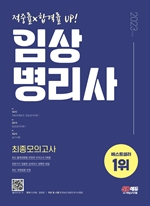
Simulink 활용 신경간 결합매체의 모델링 및 뉴런 동기화에 미치는 영향
- 저자Muhammad Iqbal, Muhammad Rehan, Keum-Shik Hong 저
- 출판사아진
- 출판일2020-07-14
- 등록일2020-12-21
- SNS공유


- 파일포맷PDF
- 파일크기27MB
- 공급사YES24
-
지원기기
PC
PHONE
TABLET
프로그램 수동설치
전자책 프로그램 수동설치 안내
아이폰, 아이패드, 안드로이드폰, 태블릿,
보유 1, 대출 0,
예약 0, 누적대출 7, 누적예약 0
책소개
In this paper, modeling of the coupling medium between two neurons, the effectsof the model parameters on the synchronization of those neurons, and
compensation of coupling strength deficiency in synchronization are studied. Our
study exploits the inter-neuronal coupling medium and investigates its intrinsic
properties in order to get insight into neuronalinformation transmittance and, there
from, brain-information processing. A novel electrical model of the coupling
medium that represents a well-known RLC circuit attributable to the coupling
medium’s intrinsic resistive, inductive, and capacitive properties is derived.
Surprisingly, the integration of such properties reveals the existence of a natural
three-term control strategy, referred to in the literature as the proportional
integral derivative (PID) controller, which can be responsible for synchronization
between two neurons. Consequently, braininformation processing can rely on a
large number of PID controllers based on the coupling medium properties
responsible for the coherent behavior of neurons in a neural network. Herein, the
effects of the coupling model (or natural PID controller) parameters are studied
and, further, a supervisory mechanism is proposed that follows a learning and
adaptation policy based on the particle swarm optimization algorithm for
compensation of the coupling strength deficiency.
목차
제 1편 : SIMULINK 기본편1.1 SIMULINK의 시작 1
블록의 연결 5
블록 파라미터의 설정 7
시뮬레이션 파라미터 (Configuration Parameters)의 설정 8
시뮬레이션의 수행 9
블록 파라미터의 표시 9
복수 데이터의 표시 11
2.2 동적 시뮬레이션 13
이차 미분방정식 17
선형 상태변수 모델 23
DC 모터의 시뮬레이션 24
함수 블록의 사용 29
차분방정식(difference equation)의 모델링 34
Subsystem(부시스템)의 구성 37
제 2편 : 연구논문
Modeling of inter-neuronal coupling medium and its impact on
neuronal synchronization
1. Introduction 41
2. Results and discussion 43
3. Coupling strength as PID control for synchronization 47
4. Effects of PID components in neuronal synchronization 49
5. Methods 54
6. Conclusions and future research recommendations 57
7. References 58

















